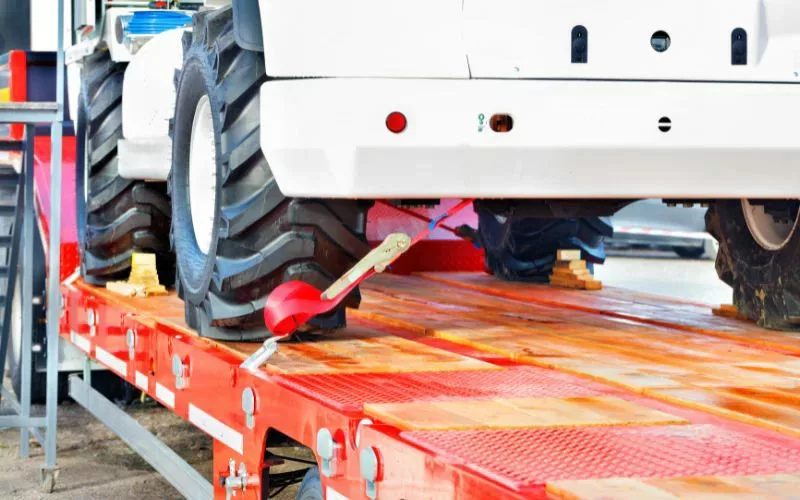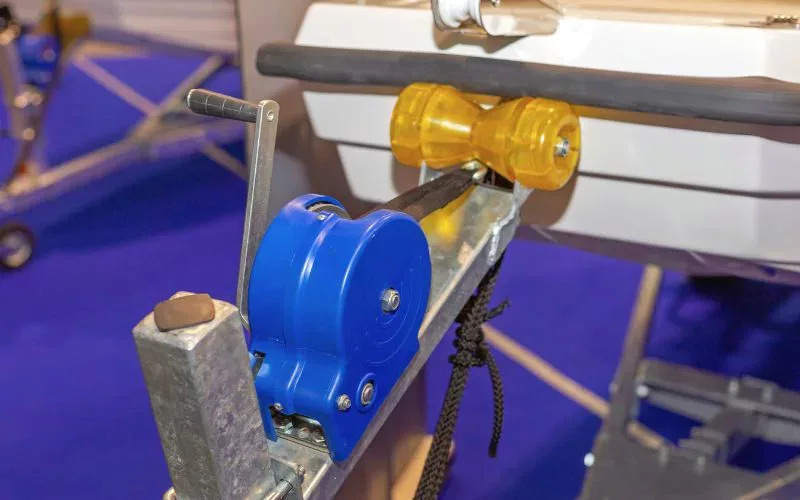No, it’s not advisable to use ratchet straps for towing. Why Can’t You Use Ratchet Straps for Towing? Understand the risks and learn more about the proper use measures of Ratchet straps in the following article.
Why Ratchet Straps Are Not for Towing
Towing requires equipment capable of handling the constant pulling forces, sudden jerks, and directional changes, which ratchet straps are not engineered to withstand. Using ratchet straps, which are typically made of woven polyester or nylon, can lead to strap failure due to material stretching, tearing, or breaking under towing tension. The hardware on ratchet straps is also not rated for the significant loads imposed by towing, posing a safety risk of detachment or breakage.
When securing cargo, your safety depends on using the right tools for the job. Ratchet straps are excellent for securing loads but are not designed for towing, which involves different stresses and requirements.
Cargo Securement vs. Towing

Ratchet straps are built primarily for securing cargo to prevent it from shifting during transport. Their working load limit is appropriate for this purpose, ensuring that the cargo is held tightly in place. However, towing involves pulling the full weight of an object, and the forces at play are substantially more dynamic. While ratchet straps may appear sturdy, they lack the specific design features that towing equipment, like chains or winch straps, have, which are made to withstand the pulling forces experienced during a tow.
Risk Factors
The risks of using ratchet straps for towing include:
- Inadequate tension: Ratchet straps may not provide the continuous, high tension required for towing, leading to potential slippage or breakage.
- Safety hazards: Using a product outside its intended use can result in equipment failure, posing serious safety risks to you and others on the road.
- Damage: Improper use of ratchet straps for towing can damage both the strap and the vehicles involved due to excessive force.
For these reasons, it’s essential to choose the correct products designed for towing tasks to ensure your safety and the safety of your cargo.
Proper Use of Ratchet Straps
Securing Cargo with Ratchet Straps

To secure cargo on a trailer or in a truck bed, you need to choose the right straps with appropriate load limits. Start by placing the cargo onto the trailer or flatbed truck. Attach the end fittings of the ratchet strap to appropriate points like anchor points or an e-track system designed to accept e-track straps.
How to Thread the Strap
Before you can tighten the strap, it must be properly threaded through the ratchet’s mandrel. Open the ratchet handle completely so that the mandrel is accessible. Slide the strap’s end through the slot in the mandrel and back onto itself, creating a loop. Pull any excess strap through to avoid slack.
Tensioning and Releasing the Strap
Once threaded, the next step is to tighten the strap by pulling the excess webbing while gently pumping the ratchet handle. Continue until the strap is tight and the cargo is secure. Beware of the common error of over-tightening which can damage both the strap and the cargo. To release the strap, pull the release lever and open the ratchet handle until it is flat, then pull the strap out of the mandrel.
Maintenance and Safety Tips
To ensure your load is secure and to extend the lifespan of your ratchet straps, regular maintenance and careful handling are essential. Proper attention to the state of your ratchet straps can prevent cargo damage and personal injury.
Inspecting Ratchet Straps
Before and after each use, meticulously inspect your ratchet straps. Check for signs of abrasive wear, tears, or fraying. The ratchet mechanism itself must operate smoothly; if it’s not, it’s time for cleaning or replacement. When inspecting, follow these steps:
- Look along the entire length of the strap for any cuts or nicks.
- Ensure the stitching is intact and shows no signs of unraveling.
- Test the ratchet mechanism to confirm it locks and releases as it should, without sticking or jamming.
Preventing Damage to Straps
Your ratchet straps are vital for cargo control, but they can be susceptible to damage if not used properly. To prevent damage:
- Avoid contact with sharp edges. Pad the straps if necessary, to minimize cutting or abrasions.
- Keep straps away from chemicals or extreme heat, as this could weaken the webbing.
- When not in use, store your straps in a dry, cool place out of direct sunlight to prevent UV damage.
By regularly maintaining your ratchet straps and taking measures to prevent damage, you contribute significantly to the safety and longevity of your cargo control system.
Alternative Solutions for Towing
When it comes to towing, it is crucial for you to utilize proper equipment for safety and effectiveness. Let’s review alternative strategies for towing loads : winch straps for larger cargo.
Towing with Winch Straps

Winch straps are a sturdy alternative, commonly made from heavy-duty webbing, and can withstand significant forces. The primary advantage of winch straps is their higher breaking strength, allowing you to tackle larger, heavier loads with confidence. To use, you attach one end to the load and the other to your towing vehicle or trailer. By turning the winch mechanism, you create tension in the strap. It’s important to select a winch strap with suitable breaking strength for your specific towing necessities.
- Break Strength: Look for straps that are rated significantly above the weight of the cargo.
In selecting the correct equipment, you should consider the specific conditions of your cargo and the recommendations of towing experts. Your decision should be guided by the desired balance of security and care for the items you are transporting. Always corroborate the capacity and durability of your chosen tie-down straps with the product specifications and customer reviews to ensure they meet your towing requirements.
Frequently Asked Questions
How do the strength and elasticity of tow straps differ from ratchet straps?
Tow straps are specifically designed with higher tensile strength and controlled elasticity to absorb shocks better during towing, unlike ratchet straps, which may stretch unpredictably or not provide enough elasticity.
Are there legal implications to using ratchet straps instead of tow or recovery straps?
Using ratchet straps for towing might violate transport regulations that mandate proper towing equipment, potentially leading to fines or legal responsibility in case of equipment failure.
What are the consequences of using improper equipment like ratchet straps for vehicle recovery?
Improper equipment like ratchet straps can break under the strain of vehicle recovery, risking damage to both the vehicles involved and posing serious safety risks to all nearby.
Why are tow straps without hooks recommended over ratchet straps for towing?
Tow straps without hooks reduce the risk of disconnection and are less likely to cause injury if released under tension, whereas ratchet straps with hooks are not designed for the strains of towing.
How do the design and materials of recovery straps provide an advantage over ratchet straps for towing purposes?
Recovery straps are made with materials and design features that support the jerking and pulling forces experienced in towing, offering durability and reliability that ratchet straps can’t match.

